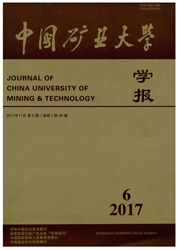

 中文摘要:
中文摘要:
塘古巴斯坳陷是塔里木盆地油气勘探的重要接替区,初步研究显示玛东构造带具有良好的油气远景,但是构造研究相对薄弱,制约了下一步的油气勘探。本文利用最新的钻井和地震资料解释成果,对塘古巴斯坳陷玛东构造带断裂构造的几何学和运动学特征进行了分析,并探讨了断裂差异演化的成因机制。结果表明,玛东构造带纵向上以中寒武统阿瓦塔格组膏盐岩为界,形成盐下基底卷入逆冲断裂和盐上盖层滑脱逆冲断裂两套变形系统;横向上从南向北,划分为3个构造段,且断裂组合样式逐渐复杂。构造带南段、中段和北段断裂主要活动期分别为志留纪–泥盆纪、中奥陶世末–二叠纪以及晚奥陶世中期–泥盆纪,断裂活动具有中段早、两端晚以及中间延续时间长、两端延续时间短的特征。不同构造段地层缩短量和缩短率反映,构造带北段在志留纪–泥盆纪缩短作用最强,构造带中段和南段则在晚奥陶世缩短作用最强,断裂活动性整体具有由北东往南西减弱的规律。玛东构造带差异构造变形受多重因素控制,包括:基底断裂的控制作用、古隆起的隆升阻挡作用、构造应力场的叠加作用、盐岩层系的调节作用和区域构造的反转作用。
 英文摘要:
英文摘要:
The Tanggubasi Depression is an important area for oil-gas exploration in the Tarim Basin. According to the preliminary research, there's promising oil-gas prospect in the Madong structural belt. The geometry and kinematic characteristics of the fault structures of the Madong structural belt in the Tanggubasi Depression were analyzed based on the latest drilling and seismic data interpretation, and the formation mechanism of different fault evolution were discussed. The results demonstrated that it was bounded by gypsum-salt rocks of the Awatag Formation in the Middle Cambrian, with two vertical deformation systems: under-salt basement involved in thrust fracture and above-salt layer slipping from the thrust fracture. Two vertically distributed deformation systems can be recognized, which are divided by the evaporites rocks in the Middle Cambrian Awatag Formation, i.e., the thrust fracture and slip thrust fracture beneath and above the evaporates respectively. Three tectonic sections can be identified in the Madong structural belt laterally, displaying increasing complex fault combination from south to north. The south, middle and north sections of structural belt were mainly active in the Silurian-Devonian, the end of the Middle Ordovician-Permian and the late Middle Ordovician-Devonian. The structural belt is characterized by early but long duration activity in middle but late and short duration in two ends. It is demonstrated that the middle section of the structural belt was active earlier with long duration, whereas the ends of the belt were active later and only in a short period. The shorting strains and rates of different structural segments reflected that the strongest shorten of the north structural belt formed in Silurian-Devonian, and the strongest shorten of the middle and the south structural belt formed in the Late Ordovician, showing a gradually weaken inclination from north-east to south-west as a whole. The structural deformations of the Madong structural belt are controlled by factors inclu
 同期刊论文项目
同期刊论文项目
 同项目期刊论文
同项目期刊论文
 Structural deformation and fluid flow from East Sichuan to the northwestern periphery of the Xuefeng
Structural deformation and fluid flow from East Sichuan to the northwestern periphery of the Xuefeng Polygonal faults in the Sanzhao sag of the Songliao basin: their significance in hydrocarbon accumul
Polygonal faults in the Sanzhao sag of the Songliao basin: their significance in hydrocarbon accumul 期刊信息
期刊信息
